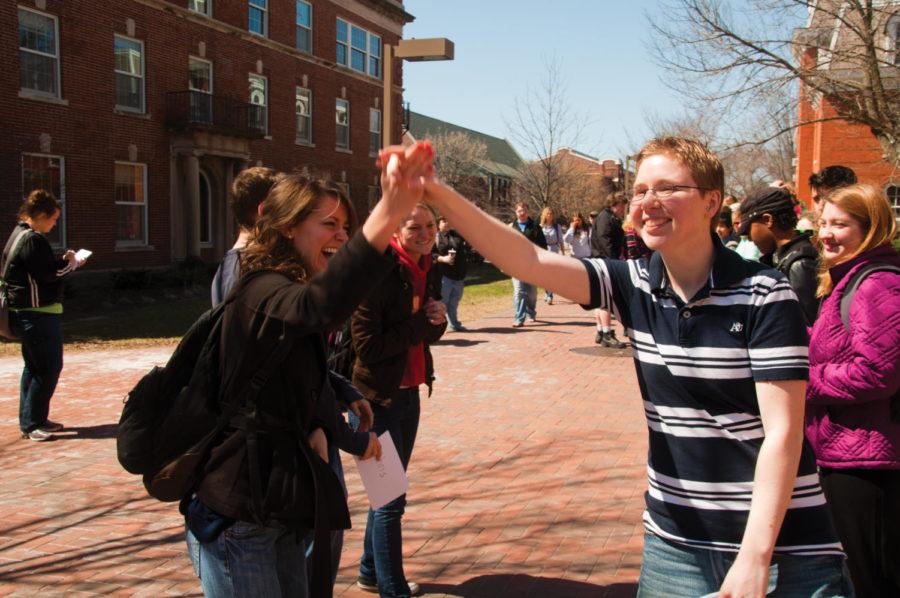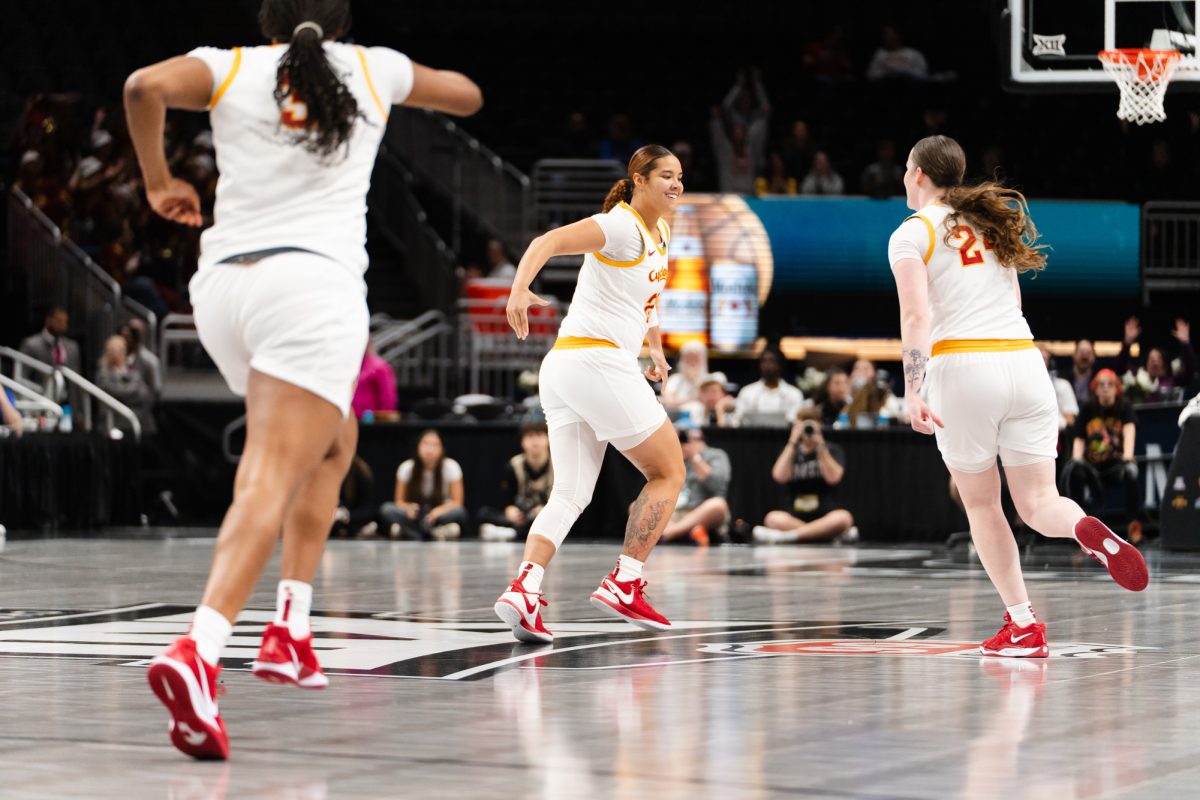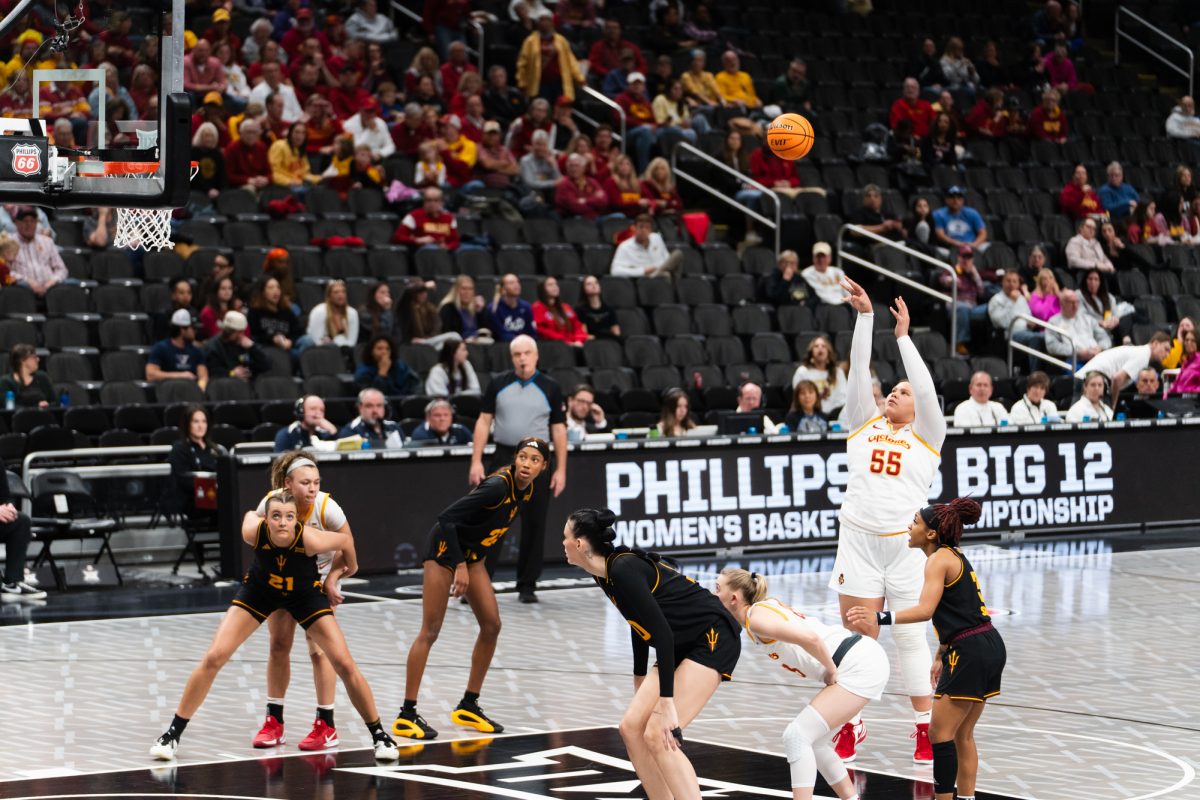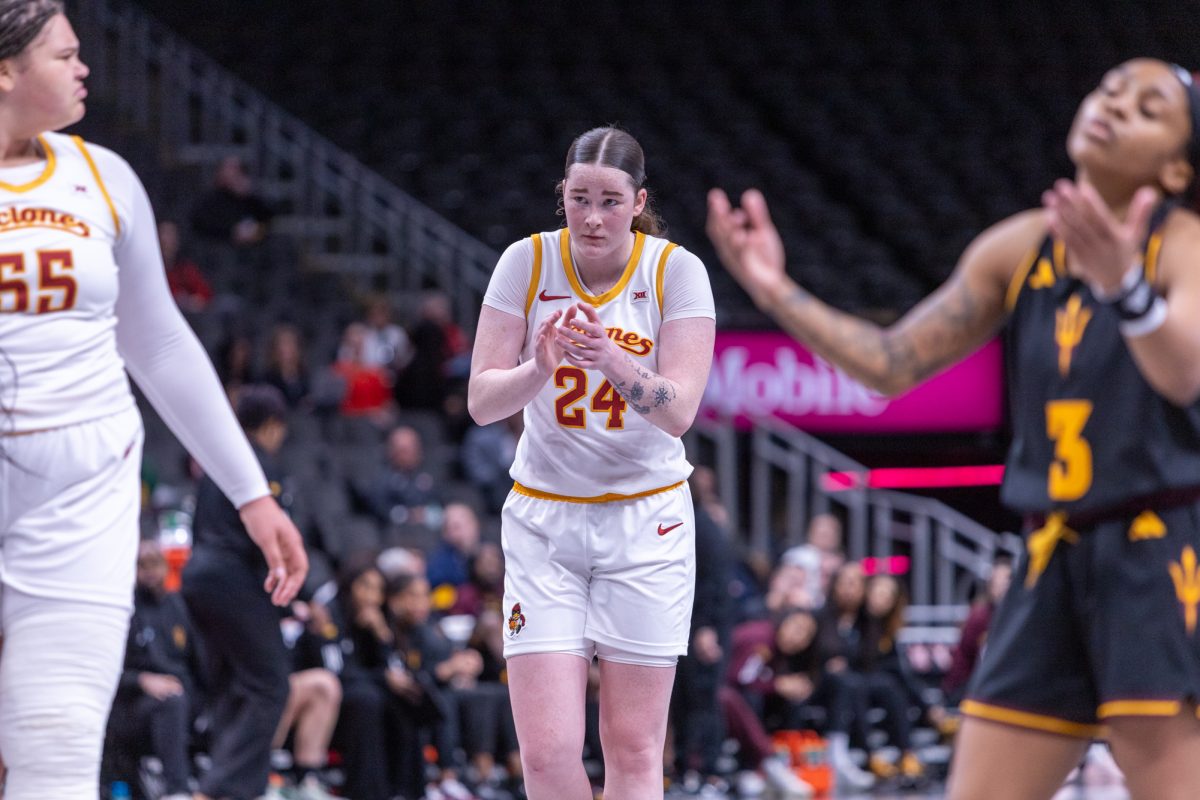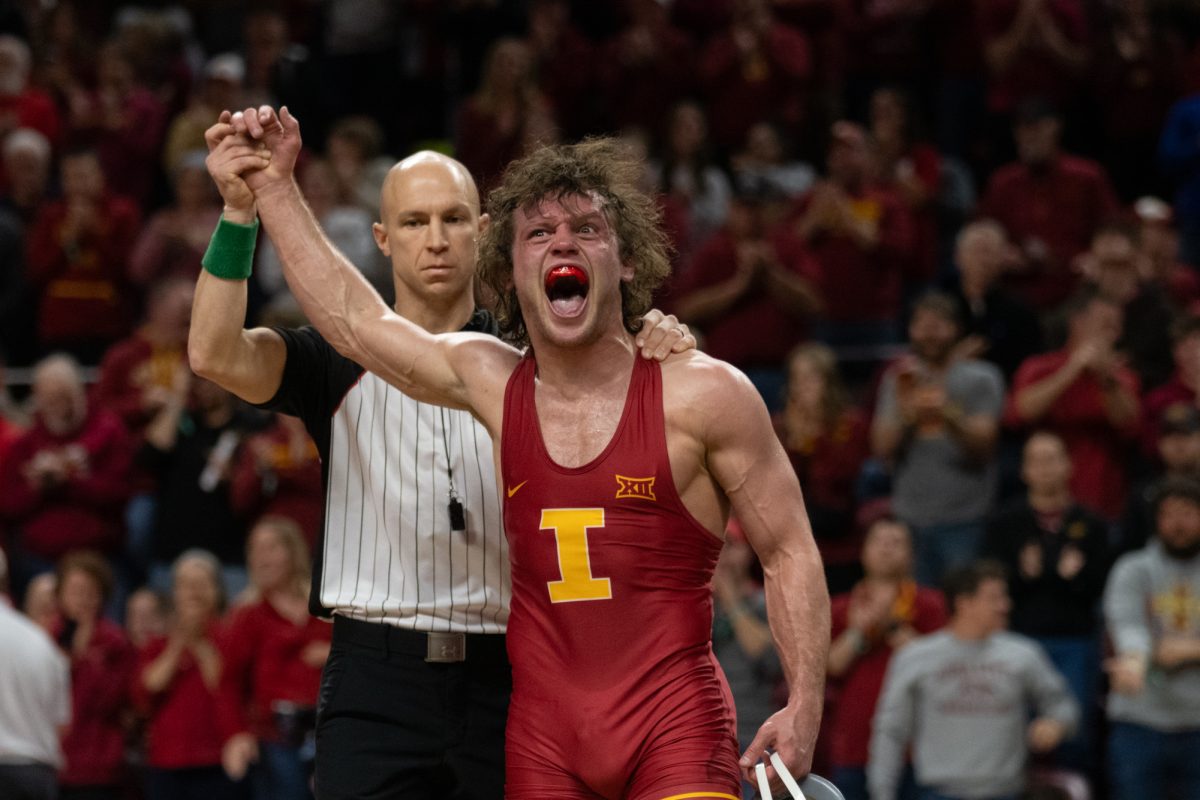Pride Week identification lineup breaks LGBT stereotypes
April 5, 2011
“Judge us, you know you want to; you can judge us, but we won’t judge you.”
These were the beginning words directed toward passing students Tuesday outside of the Student Services Building.
The first student to step up to the challenge responded, “Why does it matter?” This was soon followed by the line-up applauding and replying, “That’s the point!”
About 20 students gathered in a line holding pieces of paper that had their name on the front, and their gender and sexual orientation on the back, which was revealed after a participant guessed.
Kellen Vance, junior in finance, was one of the first to take a shot at guessing the sexual orientation of the students in the line-up.
“It’s a little bit odd. I’m not really the judging kind. It’s hard to post a label, especially with all the ranges of gender expression. The idea of pansexual is new to me, so that was interesting,” Vance said.
Pansexuality is defined as “expressing or involving sexuality in many different forms or with a variety of sexual outlets.” This means a person is attracted to an array of people and does not label him or herself as just liking men or just liking women, nor does it mean he or she lets gender determine who he or she chooses to fall in love with.
Randy Wells, freshman in psychology, said he also found this experience particularly intriguing.
“[It’s like] taking a shot in the dark. Going out and labeling people is just awkward, and in this case it was even to their face,” Wells said.
The line-up was composed of members from the ISU Lesbian, Gay, Bisexual, Transgender Ally Alliance who were trying to promote the destruction of stereotypes and their validity. The activity was to prove a person can not make an accurate assumption of another person’s sexual orientation.
Aaron Langlois, senior in hospitality management, was one of the line-up members and recruited participants during the event.
“It’s a simple way to demonstrate that stereotypes are wrong and guessing their sexuality proves how little we know about people from their appearance,” Langlois said. “Three out of four times I was guessed to be straight; I’m gay.”
“The ones who ignore us, it’s not going to change a thing. But the people who have been participating have had a positive experience,” Langlois said. “They realize you can’t gauge someone’s sexuality by the way they look or dress. People who walk by and say, ‘They are just a bunch of gays,’ well there’s nothing we can do.”
The demonstration lasted for more than an hour, and had a large turnout of participants and observers.
“[The line-up] is a great way to disprove stereotypes. The ‘gaydar’ is false, and the proof is right here,” said Chris Celania, junior in materials engineering and secretary of the LGBTAA.
Celania reflected on watching the participants.
“A lot of people get embarrassed. Even if they are right they feel guilty for being right,” Celania said. “And if they are wrong they feel guilty, like they offended the person for guessing their sexuality wrong.”


